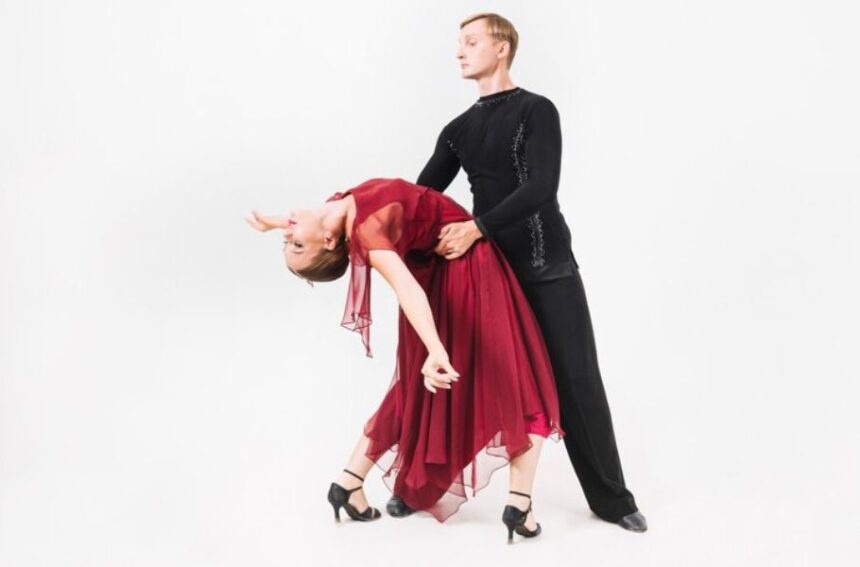Ballroom dance is a breathtaking blend of elegance, rhythm, and expression, and the right costume plays a vital role in bringing performances to life. These dazzling outfits are designed to enhance movement, captivate audiences, and reflect the dancer’s style. From flowing gowns for waltz to bold, fringed Latin dresses, every costume is crafted with precision and flair. Beyond aesthetics, comfort and flexibility are essential to ensure flawless execution on the dance floor. Whether you’re a competitor or a social dancer, choosing the perfect ballroom dance costume can elevate your performance to the next level.
History of Ballroom Dance Costumes
Ballroom dance costumes have evolved dramatically over time. In the early days, dancers wore formal evening attire, with women in long, flowing gowns and men in tuxedos. Over the years, the designs have become more intricate, incorporating elements that allow for better movement, enhanced visual appeal, and modern fashion influences. Today, ballroom costumes blend tradition with innovation, offering dazzling designs that complement different dance styles.
Essential Features of Ballroom Dance Costumes
Ballroom dance costumes are designed to do more than just look stunning—they must support movement, enhance performance, and captivate the audience. Here are some key features that make these costumes both functional and eye-catching:
Comfort and Flexibility: Dancers need complete freedom of movement to execute spins, lifts, and intricate footwork. Costumes are made with stretchable fabrics like Lycra and chiffon to allow flexibility without restriction.
Aesthetics and Visual Appeal: Ballroom costumes are designed to stand out under stage lighting. Bright colors, shimmering rhinestones, and flowing fabrics create a mesmerizing effect that enhances the dancer’s presence.
Fabric Choices for Movement: Lightweight materials such as satin, silk, and mesh ensure fluidity and grace. Latin dance costumes often use fringes and ruffles to emphasize fast-paced movements, while standard ballroom dresses feature layered skirts for a dramatic effect.
Secure Fit and Durability: Costumes must fit snugly without slipping or causing discomfort. Adjustable straps, built-in bodysuits, and reinforced seams help maintain structure even during energetic performances.
Embellishments and Details: From hand-sewn beads to intricate embroidery, ballroom dance costumes feature dazzling embellishments that add glamour. However, these elements must be lightweight and securely attached to avoid distractions during the performance.
Costumes for Different Dance Styles
Each ballroom dance style requires a unique costume that complements its rhythm and movement. For example, waltz costumes are often elegant and flowing, with long skirts and delicate details that highlight the graceful turns. In contrast, Latin dance costumes are bold and form-fitting, often featuring fringes or sequins to emphasize fast, sharp movements. Tango costumes are sleek and dramatic, with high slits and strong, contrasting colors to reflect the dance’s passion. Each costume is carefully crafted to enhance the performance, ensuring that the dancer’s attire matches the energy and style of the dance.
Choosing the Right Ballroom Dance Costume
Selecting the perfect ballroom dance costume is a balance of style, comfort, and functionality. The outfit should complement the dancer’s movements, ensuring freedom and flexibility while maintaining a secure fit. Color and design play a crucial role in making an impact on the dance floor, with bold hues and sparkling embellishments enhancing stage presence. It’s also important to consider the specific dance style, as flowing gowns suit waltz while sleek, form-fitting outfits are ideal for Latin dances. Whether custom-made or ready-made, the right costume can elevate a dancer’s confidence and performance.
Custom-Made vs. Ready-Made Costumes
When choosing a ballroom dance costume, dancers often face the decision between custom-made and ready-made options. Custom-made costumes offer a perfect fit and personalized design, allowing dancers to select fabrics, colors, and embellishments that reflect their unique style. However, they can be more expensive and require more time to create. On the other hand, ready-made costumes are more affordable and readily available, making them a convenient choice for those on a budget or with tight deadlines. Ultimately, the choice depends on the dancer’s priorities, whether it’s the perfect fit and customization or convenience and cost.
Caring for Ballroom Dance Costumes
Proper care is essential to maintain the beauty and longevity of ballroom dance costumes. After each performance, it’s important to gently spot clean any stains and avoid harsh chemicals that could damage delicate fabrics. Store costumes in a cool, dry place, using garment bags to protect them from dust and damage. Always hang dresses by the bodice or straps to prevent wrinkles and maintain their shape. Regularly check for loose embellishments and ensure any repairs are made promptly to keep the costume looking pristine for future performances.
Trends in Ballroom Dance Costumes
Ballroom dance costumes continue to evolve, blending tradition with modern fashion influences. One of the biggest trends is the use of high-tech fabrics that enhance flexibility and comfort while maintaining a glamorous look. Bold and unconventional color combinations, such as neon shades and metallic tones, are becoming more popular, making dancers stand out under bright stage lights. Minimalist designs with strategic embellishments are also gaining attention, offering a sleek yet elegant appearance. Additionally, eco-friendly materials and sustainable fashion practices are making their way into the ballroom scene, reflecting a growing awareness of environmental responsibility. As styles change, the emphasis remains on costumes that enhance movement, capture attention, and bring performances to life.
Fabric Choices for Ballroom Dance Costumes
The fabric used for ballroom dance costumes plays a significant role in both appearance and performance. Luxurious materials like satin, velvet, and silk provide a polished, sophisticated look, while lightweight fabrics like chiffon and tulle allow for fluid movement. Dance-specific materials such as Lycra and Spandex offer excellent stretch, ensuring comfort and flexibility during high-energy routines. The right fabric helps dancers move effortlessly and ensures their costume looks stunning under the stage lights.
Accessories That Complete the Look
Accessories are the finishing touch that can elevate a ballroom dance costume to the next level. Statement jewelry, such as rhinestone necklaces, bracelets, and earrings, adds sparkle and drama to the dancer’s outfit. Gloves, hairpieces, and headbands are also commonly used to complement the costume and create a cohesive look. These accessories not only enhance the overall aesthetic but can also help the dancer express their personal style and add an extra flair to their performance.
Conclusion
Ballroom dance costumes are more than just outfits—they are an extension of the performance itself. Choosing the right costume requires attention to detail, style preferences, and comfort. Whether dazzling Latin dresses or elegant ballroom gowns, the perfect costume can elevate a dancer’s artistry and presence on the dance floor.






